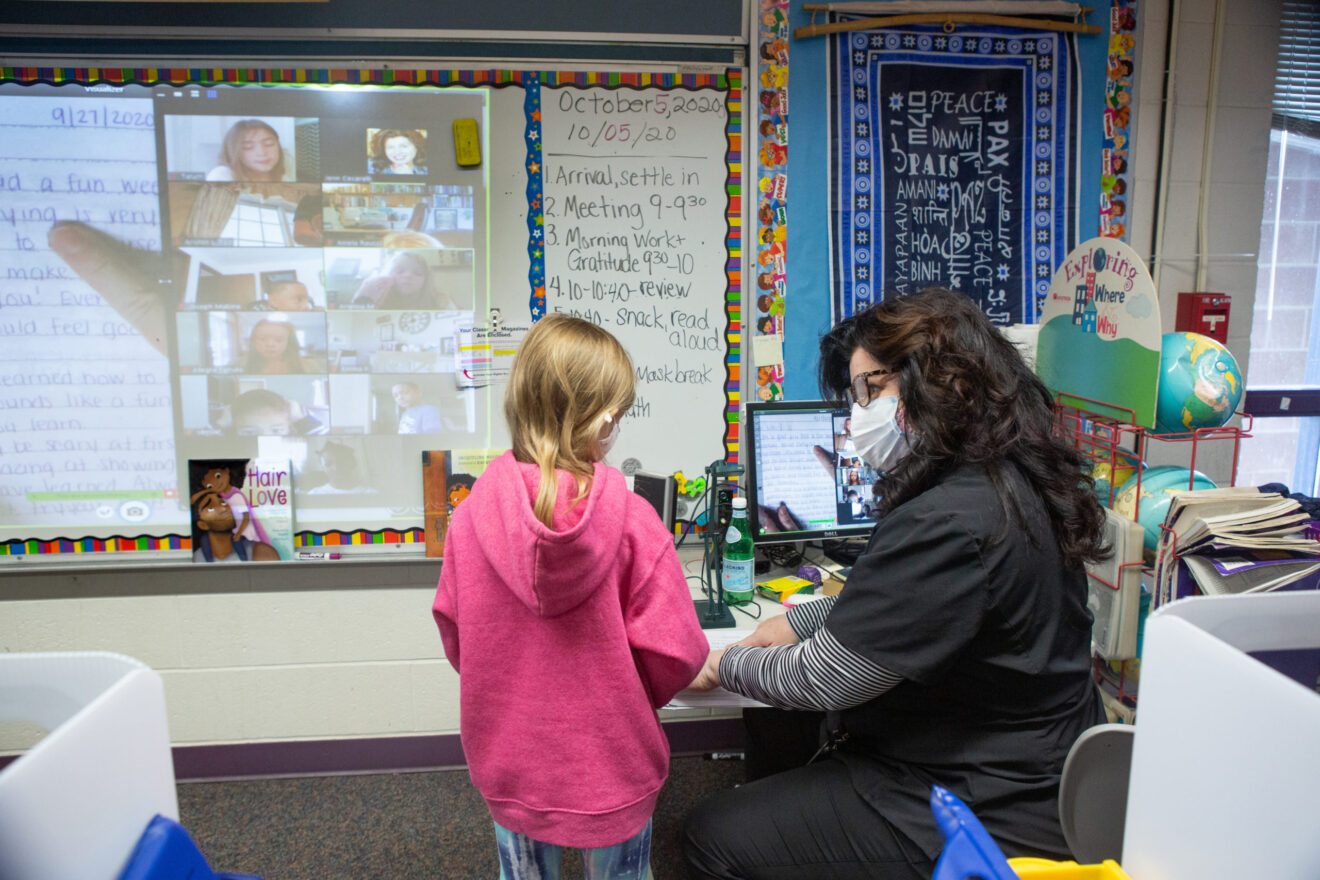As a K-2 special education teacher, my goal is always to help my students find their place in a general education classroom. My students have various learning challenges, ranging from those with severe autism to kids who read on grade level and just have trouble understanding what they’re reading. Here’s how I help them progress from special ed to general ed by supporting them in learning literacy, math and even hand-eye coordination.
Building a routine that will take them from special ed to general ed

We start at the beginning of the year with Waterford Reading Academy, an adaptive learning program, getting it into their routine so they know exactly what we expect of them. They know how to log in on their own. From day one, our whole day is based on the timer on the iPad. When I have a group of kids, I can look at the time on the computer and say, “OK, we’ve got about five more minutes.”
They know this program and how to work it, which allows us to make the most of it every day in the classroom. I think that routine is crucial to overall student success as they progress from special ed to general ed. My students get so used to it that, even when I can’t be hands-on with each one of them at any given moment, they can still work their way through those exercises.
Allowing students to work at their own pace
As part of their rotations, students do 30 minutes of reading in the morning, then 30 minutes of math and science in the afternoon. Kids like it because they’re on the iPad and they can go at their own speed. As an instructor, I like it because students can follow individualized instruction geared toward their needs and at their pace, rather than being restricted to the pace of the classroom as a whole.
Since they can work at their own pace, they’re more likely to really absorb the material. They’re also more comfortable with the content when they’re able to go at their own pace.
Learning hand-eye coordination
Our students like games where they can pick up the mouse and drag things over, because they’re not just sitting there watching something; they actually get to be involved in it. If they can’t use the mouse, I can put them on an iPad, where they still engage with the lesson even though they may not have the coordination yet.
However, throughout the year, I might say, “Let’s try the computer again!” because that hand-eye coordination is such a valuable skill for them to have, and I want to keep building on it.
Over time, a lot of students develop much better hand-eye coordination, not just on those digital learning platforms, but as part of their everyday skills.
Unlike some of the activities they have to do, it doesn’t feel like learning. It just feels like they’re having fun and playing their favorite games, which means they are less likely, in general, to get frustrated or discouraged.
Offering individualized instruction on the path from special ed to general ed
A lot of the learning students do through the platform is individualized because we’re working on their individualized education program. I monitor their progress to see where they’re struggling, where they’ve excelled and what they may have moved past. Then I can bring that to my small groups of three, knowing that they need a little more on a certain skill or that they’re ready to move on to the next skill or level.
My approach can differ quite a bit depending on the severity of a student’s autism. I have some kids with autism who have no problems going through the rotations on the computer, but I also have some who will not sit at a computer. They don’t want headphones on, so we use the iPad with them. The great thing is, they get to do this highly individualized instruction that is geared toward their unique needs.
My students love the songs and music in the program. Sometimes they have a favorite activity and they want to do that every single time. Instead of stressing them out and asking them to move on, I’ll say, “Go ahead on your math.” They’re enjoying it. They’re being exposed to math. It lets students expand their knowledge in a way that works for each one of them.
Connecting with parents
During the IEP process, the program gives me detailed feedback to use on progress reports with parents. I can provide them with real, concrete data about what their students have been accomplishing and how they’ve been moving through the program. I can show them, “Here’s where your student started out, and here’s the level they have progressed to.”
Parents feel better informed, which means we are all in a better position to take next steps for our students and make sure they’re ready before they move on to the next level.
Speaking of which, I actually had two kids last year go from special ed to general ed classes and come back to visit me this year. They wanted to show me work that they’ve done, and, while they were in the classroom, they wanted to watch the kids work through the program. They went over to the computers and watched them play because they missed it.
I love that it’s a program that really gets kids interested in learning and engaged in the process.
Melissa Ochoa teaches students with disabilities in kindergarten through second grade at the Killeen Independent School District in Texas, where she uses Waterford Reading Academy. She can be reached at [email protected].
Opinions expressed by SmartBrief contributors are their own.
_________________________
Subscribe to SmartBrief’s FREE email newsletter to see the latest hot topics on Special Education. It’s among SmartBrief’s more than 250 industry-focused newsletters.
